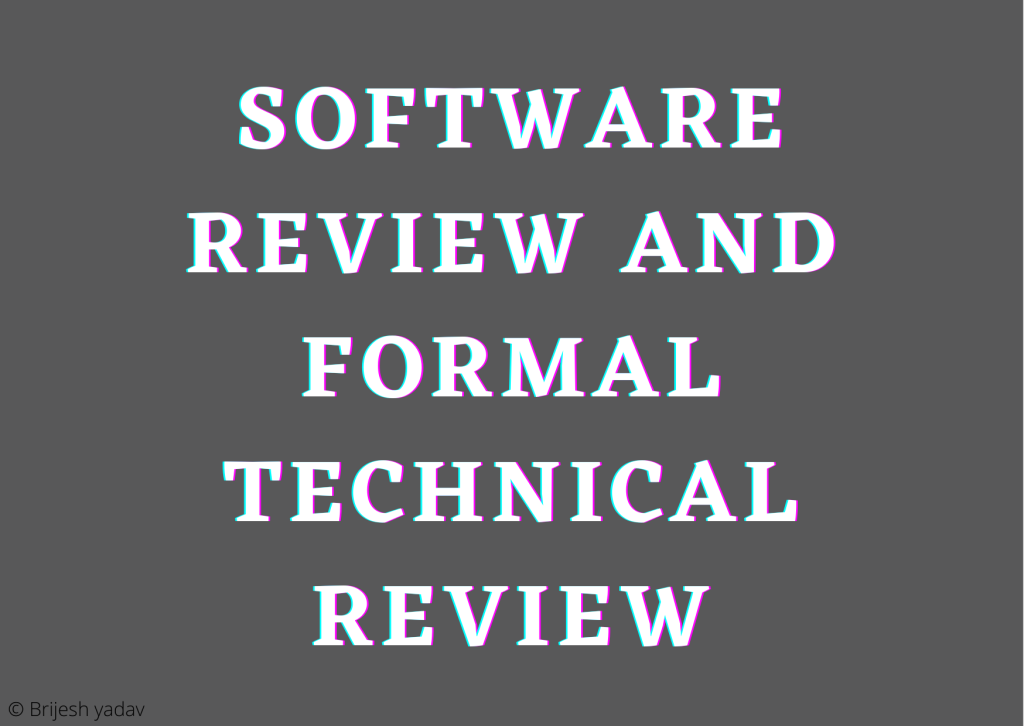Unlock The Power Of Software Reviews: Your Ultimate Guide To Formal Technical Reviews
Software Reviews: The Importance of Formal Technical Reviews
Introduction
Dear Readers,
1 Picture Gallery: Unlock The Power Of Software Reviews: Your Ultimate Guide To Formal Technical Reviews

Welcome to this informative article about software reviews and the significance of formal technical reviews. In today’s digital world, where software plays a crucial role in our personal and professional lives, it is essential to understand the importance of evaluating and reviewing software before implementation. In this article, we will explore the concept of formal technical reviews, their benefits, and how they contribute to the overall quality and success of software development projects.

Image Source: mechomotive.com
We hope you find this article insightful and valuable.
What are Software Reviews?
Software reviews are a systematic evaluation of a software product or system conducted by a team of experts or stakeholders. These reviews aim to identify and assess potential risks, defects, and areas of improvement in the software. Formal technical reviews, in particular, follow a structured process and involve multiple participants, ensuring a comprehensive evaluation of the software’s design, code, and documentation.
Who Participates in Formal Technical Reviews?
Formal technical reviews typically involve various stakeholders, including software developers, quality assurance engineers, project managers, and end-users. Each participant brings their expertise and perspective to the review process, ensuring a well-rounded evaluation of the software’s functionality, usability, and overall quality.
When are Formal Technical Reviews Conducted?
Formal technical reviews are typically conducted at different stages of the software development lifecycle. They can occur during the requirements gathering phase, design phase, coding phase, and even after the software is deployed. By conducting reviews at various stages, potential issues and defects can be identified and addressed early on, reducing the risk of costly rework and ensuring a smoother development process.
Where are Formal Technical Reviews Performed?
Formal technical reviews can be conducted in various settings, depending on the nature of the software and the availability of participants. They can take place in a dedicated meeting room, virtually through video conferencing tools, or even asynchronously through online collaboration platforms. The key is to create an environment conducive to open discussions and constructive feedback exchange.
Why are Formal Technical Reviews Important?
Formal technical reviews play a vital role in software development for several reasons:
1️⃣ Identifying Defects: By thoroughly examining the software’s design and code, formal technical reviews help identify defects and vulnerabilities that may have been overlooked during individual development efforts.
2️⃣ Improving Quality: Through collaborative discussions and feedback, formal technical reviews contribute to improving the overall quality and reliability of the software. By catching and addressing issues early on, the software becomes more robust and less prone to failures.
3️⃣ Knowledge Sharing: Formal technical reviews provide an opportunity for knowledge sharing among team members. Participants can learn from each other’s expertise, best practices, and innovative solutions, ultimately enhancing the team’s collective knowledge and skill set.
4️⃣ Stakeholder Satisfaction: When software undergoes thorough reviews, its functionality and usability are validated, meeting the expectations and requirements of stakeholders and end-users. This leads to increased satisfaction and trust in the software’s capabilities.
5️⃣ Cost and Time Savings: By identifying and addressing defects early on, formal technical reviews help avoid costly rework and delays in the development process. This translates to significant cost and time savings for software development projects.
How to Conduct Formal Technical Reviews?
Conducting effective formal technical reviews involves following a structured process:
1️⃣ Planning: Define the objectives, scope, and participants of the review. Establish a timeline and allocate resources accordingly.
2️⃣ Preparation: Distribute the software artifacts, such as design documents and code, to the participants before the review meeting. Encourage them to review the materials and prepare their feedback in advance.
3️⃣ Review Meeting: Facilitate a collaborative discussion where participants can share their findings, concerns, and recommendations. Encourage constructive feedback and open dialogue.
4️⃣ Documentation: Document the outcomes of the review, including identified defects, proposed solutions, and action items. This documentation serves as a reference for future development efforts.
5️⃣ Follow-up: Ensure that the identified issues are addressed and resolved. Conduct subsequent reviews, if necessary, to track the progress and validate the effectiveness of the implemented changes.
Advantages and Disadvantages of Formal Technical Reviews
Advantages:
1. 🌟 Improved Software Quality: Formal technical reviews contribute to improved software quality by identifying and addressing defects early on.
2. 🌟 Cost and Time Savings: By catching issues before they escalate, formal technical reviews help save costs associated with rework and project delays.
3. 🌟 Enhanced Collaboration: The collaborative nature of formal technical reviews facilitates knowledge sharing and fosters a stronger team dynamic.
4. 🌟 Stakeholder Satisfaction: By ensuring that the software meets stakeholders’ expectations, formal technical reviews increase satisfaction and trust in the final product.
5. 🌟 Reduced Risks: Through rigorous evaluation, formal technical reviews help mitigate risks associated with software failures and vulnerabilities.
Disadvantages:
1. ⚠️ Time-Consuming: Conducting formal technical reviews requires time and effort from multiple participants, potentially impacting project timelines.
2. ⚠️ Resource Intensive: Allocating resources, such as meeting rooms and technology, for formal technical reviews can pose logistical challenges.
3. ⚠️ Subjectivity: Reviewers’ opinions and perspectives may differ, leading to subjective assessments and potential conflicts.
4. ⚠️ Skill Dependency: The effectiveness of formal technical reviews heavily relies on the expertise and experience of the participants. Inexperienced reviewers may overlook critical issues.
5. ⚠️ Resistance to Feedback: Participants may resist or disregard feedback received during formal technical reviews, hindering the effectiveness of the process.
Frequently Asked Questions (FAQ)
Q1: How often should formal technical reviews be conducted?
Formal technical reviews should be conducted at various stages of the software development lifecycle, depending on the project’s complexity and criticality. Ideally, reviews should be scheduled at key milestones to ensure comprehensive evaluation.
Q2: Can formal technical reviews be conducted remotely?
Yes, with advancements in technology, formal technical reviews can be conducted remotely through video conferencing tools or online collaboration platforms. However, it is important to establish clear communication channels and ensure all participants have access to the necessary documentation.
Q3: Are formal technical reviews applicable to all types of software?
Yes, formal technical reviews can be applied to various types of software, including web applications, mobile apps, and embedded systems. The review process may vary slightly depending on the software’s nature and requirements.
Q4: Who should be responsible for implementing the changes identified during formal technical reviews?
The responsibility for implementing changes identified during formal technical reviews lies with the software development team. Project managers and team leads play a crucial role in prioritizing and assigning tasks to the relevant team members.
Q5: How can resistance to feedback during formal technical reviews be mitigated?
Resistance to feedback can be mitigated by fostering a positive and collaborative environment where participants feel comfortable sharing their opinions and ideas. Emphasizing the objective of the review and the importance of constructive criticism can also help overcome resistance to feedback.
Conclusion
In conclusion, formal technical reviews are an integral part of software development, ensuring the delivery of high-quality and reliable software products. By identifying defects, improving collaboration, and satisfying stakeholders, these reviews play a crucial role in the success of software projects. Despite their challenges, the benefits of formal technical reviews far outweigh the drawbacks. It is vital for software development teams to embrace and prioritize formal technical reviews to achieve excellence in their products.
Final Remarks
Thank you for taking the time to read this article about software reviews and the significance of formal technical reviews. We hope you found this information valuable and insightful. Remember, incorporating formal technical reviews into your software development process can lead to improved quality, increased stakeholder satisfaction, and cost savings in the long run.
This post topic: Software Reviews


